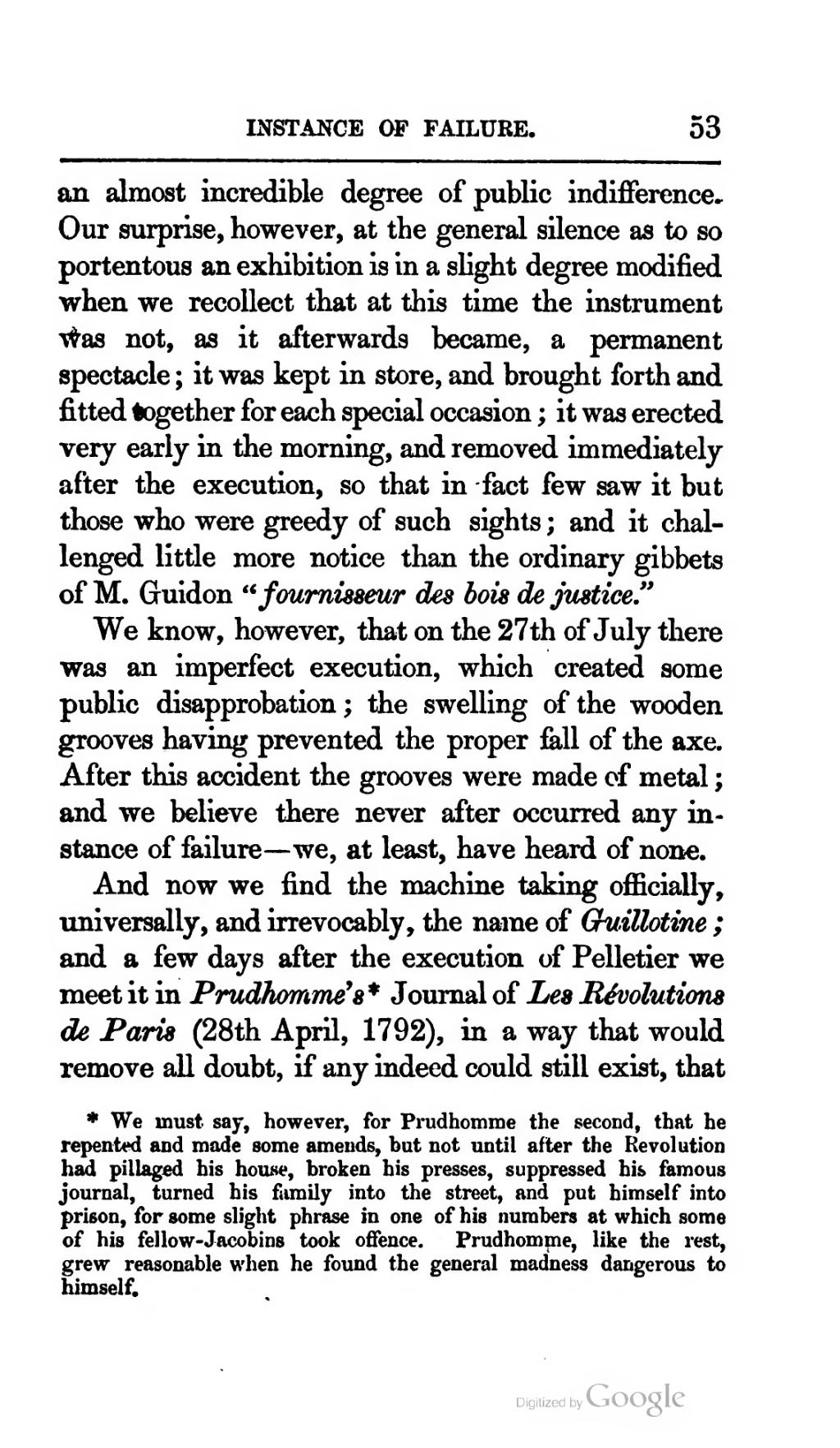an almost incredible degree of public indifference. Our surprise, however, at the general silence as to so portentous an exhibition is in a slight degree modified when we recollect that at this time the instrument was not, as it afterwards became, a permanent spectacle; it was kept in store, and brought forth and fitted together for each special occasion; it was erected very early in the morning, and removed immediately after the execution, so that in fact few saw it but those who were greedy of such sights; and it challenged little more notice than the ordinary gibbets of M. Guidon "fournisseur des bois de justice."
We know, however, that on the 27th of July there was an imperfect execution, which created some public disapprobation; the swelling of the wooden grooves having prevented the proper fall of the axe.After this accident the grooves were made of metal; and we believe there never after occurred any instance of failure—we, at least, have heard of none.
And now we find the machine taking officially, universally, and irrevocably, the name of Guillotine; and a few days after the execution of Pelletier we meet it in Prudhomme's[1] Journal of Les Révolutions de Paris (28th April, 1792), in a way that would remove all doubt, if any indeed could still exist, that
- ↑ We must say, however, for Prudhomme the second, that he repented and made some amends, but not until after the Revolution had pillaged his house, broken his presses, suppressed his famous journal, turned his family into the street, and put himself into prison, for some slight phrase in one of his numbers at which some of his fellow-Jacobins took offence. Prudhomme, like the rest, grew reasonable when he found the general madness dangerous to himself.
